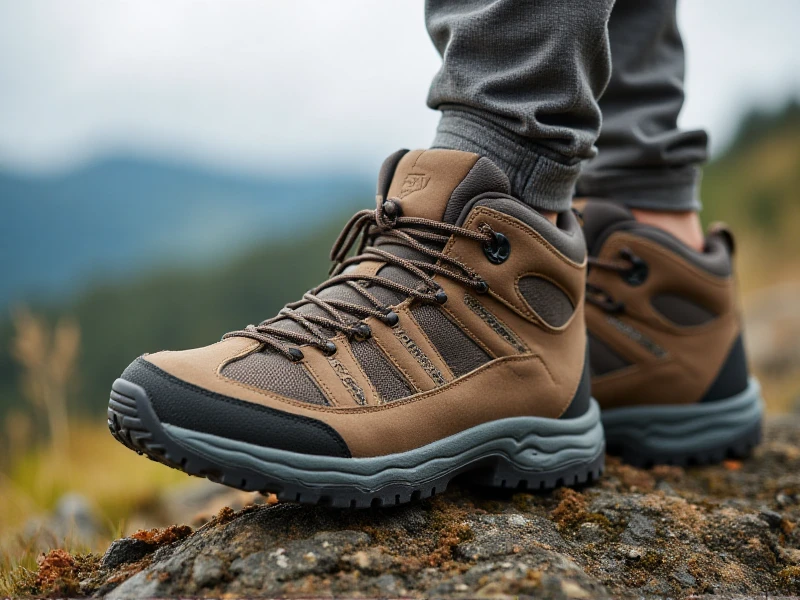The Ultimate Guide to Choosing Men's Hiking Shoes for Unbeatable Trail Performance
2025-06-01

Hitting the trails? Your adventure hinges on one critical choice: the hiking shoes on your feet. For outdoor enthusiasts, quality men's hiking shoes aren't just gear—they're your foundation for conquering rugged terrain while keeping blisters and fatigue at bay. This comprehensive guide breaks down everything you need to know before investing in your next pair.
Why Proper Hiking Footwear Matters
Ordinary sneakers crumble under trail demands. Quality men's hiking shoes deliver essential ankle support on uneven ground, protect feet from sharp rocks through reinforced toe caps, and prevent slips with aggressive lug patterns. Unlike regular footwear, they're engineered with hiking-specific features like waterproof membranes and breathable meshes. Skimp here, and you risk discomfort or injury; choose wisely, and you unlock miles of confidence.
Key Features to Elevate Your Hike
1. Terrain-Taming Outsoles: Seek Vibram® or equivalent rubber compounds with multidirectional lugs (4-5mm deep). Deep treads shed mud while providing ice-like grip on wet rocks.
2. Waterproof Mastery: Gore-Tex® membranes block rain and stream crossings while allowing sweat vapor to escape. For hot climates, prioritize non-waterproof, quick-drying mesh uppers.
3. Strategic Support Systems: Mid-cut designs stabilize ankles on technical trails, while low-cut models offer agility on well-maintained paths. Internal shanks (semi-rigid footbeds) prevent stone bruising without sacrificing flexibility.
4. Cushioning & Weight Balance: EVA foam midsoles absorb shock on descents. Aim for 1.5-2.5 lbs per pair—heavy enough for durability, light enough for long treks.
Finding Your Perfect Fit: 3 Pro Tips
- Size Strategically: Feet swell during hikes. Shop in the afternoon and leave a thumb’s width (⅜ inch) at the toe. Always test with hiking socks.
- Trial by Terrain: Match shoe class to your adventures:
- Trail Shoes (Low-Cut): Ideal for day hikes and packed trails
- Hiking Boots (Mid-Cut): Best for rocky terrain and backpacking
- Mountaineering Boots (High-Cut): Reserved for glacial travel or heavy loads
- Break-In Smartly: Wear new men’s hiking shoes indoors for 10 hours before tackling trails. Flex soles repeatedly to soften materials.
Top Styles for Every Adventure
- Speed Hikers: Lightweight hybrids with trail-runner agility and hiking shoe grip. Excellent for fastpacking.
- All-Weather Tanks: Full-grain leather uppers with sealed seams handle rain, snow, and abrasive scree.
- Eco-Conscious Models: Brands now use recycled polyester laces, algae-based foams, and chrome-free leathers.
Maintenance = Longevity
Post-hike care extends shoe life dramatically:
1. Remove insoles and brush off dried mud.
2. Air-dry naturally—never near heat sources.
3. Condition leather every 6 months with wax-based products.
4. Re-waterproof breathable membranes seasonally.
When to Retire Your Hikers
Even premium men’s hiking shoes have limits. Replace them when:
- Treads flatten to 2mm depth or less
- Midsole foam loses rebound (visible creasing)
- Waterproofing fails consistently
- Feet ache regardless of sock choice
Trail-Tested vs. Treadmill-Ready
Road-running shoes collapse laterally on off-camber trails. Hiking-specific designs feature wider platforms and torsional rigidity to prevent ankle rolls. The extra ounce in weight translates to critical protection when roots jut across your path.
Your journey deserves reliable footwear. Invest in men’s hiking shoes that match your terrain, fit your foot biomechanics, and endure season after season. Remember: blistered feet end adventures prematurely, while the right shoes transform trails into unforgettable escapes. Ready to explore farther? Your trail partners await.
Category: